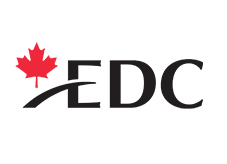The pay-per-user revenue model: B2B sales for software
You will find pay-per-user models most commonly in a business-to-business (B2B) sales context for software and specialized content.
Customer relationships
In B2B sales, selling software solutions requires a strong customer relationship that is supported by:
- Excellent customer service
- User education
- Configuration
- Implementation
- Documentation
For high-value, specialized content (such as professional market research reports), a well-managed personal sales relationship is also the standard.
Marketing issues related to the pay-per-user revenue model
When using the pay-per-user model, focus B2B sales and marketingefforts on crafting value propositions that encourage customers to purchase the offering for a high proportion of their employees.
Operational implications
Keep the operational focus of the pay-per-user revenue model on cost-effective delivery of value. If you distribute the offering in question through a network of computers (as in the case of pay-per-user software offerings), also focus on managing integration, system compatibility and support functions; doing so will optimize the customer experience and minimize costly technical failures.
Financial and strategic implications
The most pressing financial concern for pay-per-user companies is the speed at which they can add additional users. Since this occurs relatively slowly, capital is required to sustain the company as it grows its user base and builds delivery capacity.
Key metrics
Bulk B2B sales are an important metric for pay-per-user companies. Most of these companies sell user access to the software or media in increments of five or ten, depending on the appropriate scale. The company may offer initial users a temporary trial use of the product so they can assess the offering prior to making a final purchasing decision.
Modalities
The pay-per-user model is very similar to the licensing model. Licensing entitles the user to use the technology on an unlimited basis, generally in combination with sales royalties or other form of ongoing compensation. License agreements are commonly limited to a particular time period. The pay-per-user revenue model limits the number of users who can access the technology, generally in an unlimited fashion for a period of time.
Costs and benefits of the pay-per-user model
Selling on a per-user basis can prove an effective way of accessing markets with large-scale customers. This “foot-in-the-door” selling technique enables employees at the client company to promote your offering internally if they find it valuable. Unfortunately, reaching additional users incrementally is not always cost-effective, which makes it essential to determine early on the appropriate number of users at the client company.

